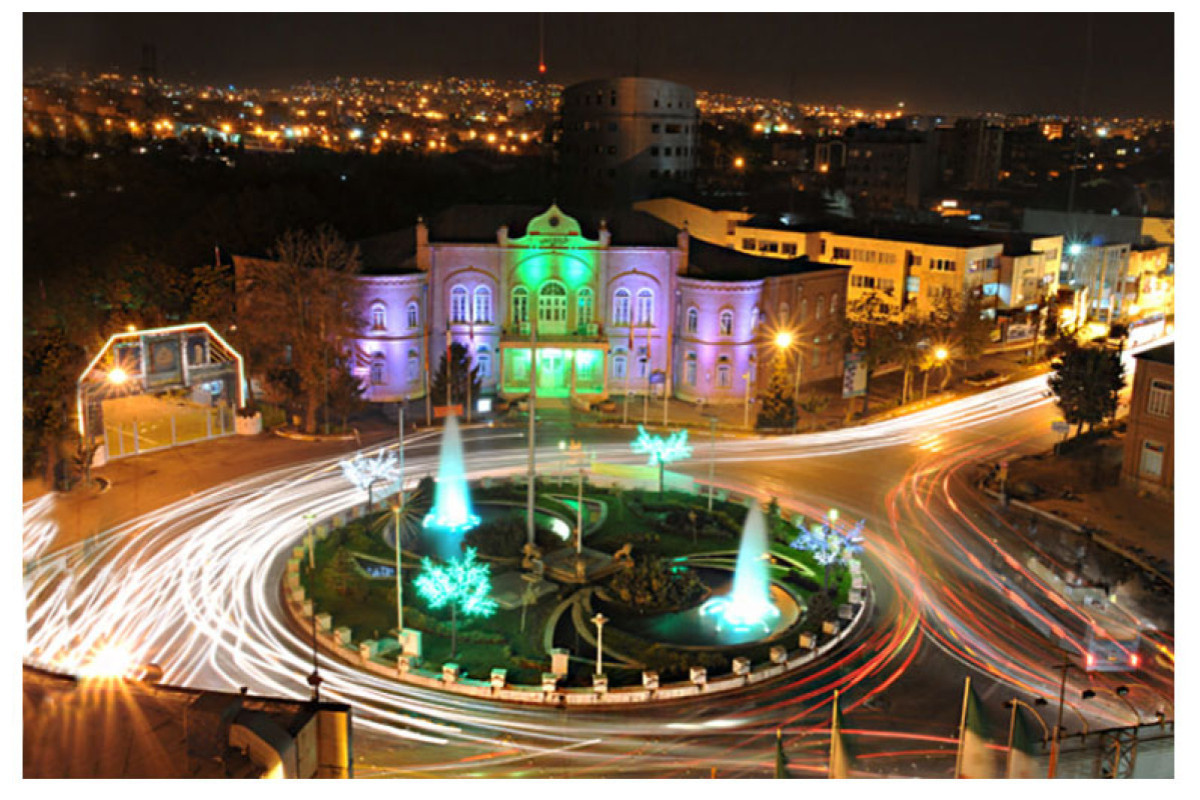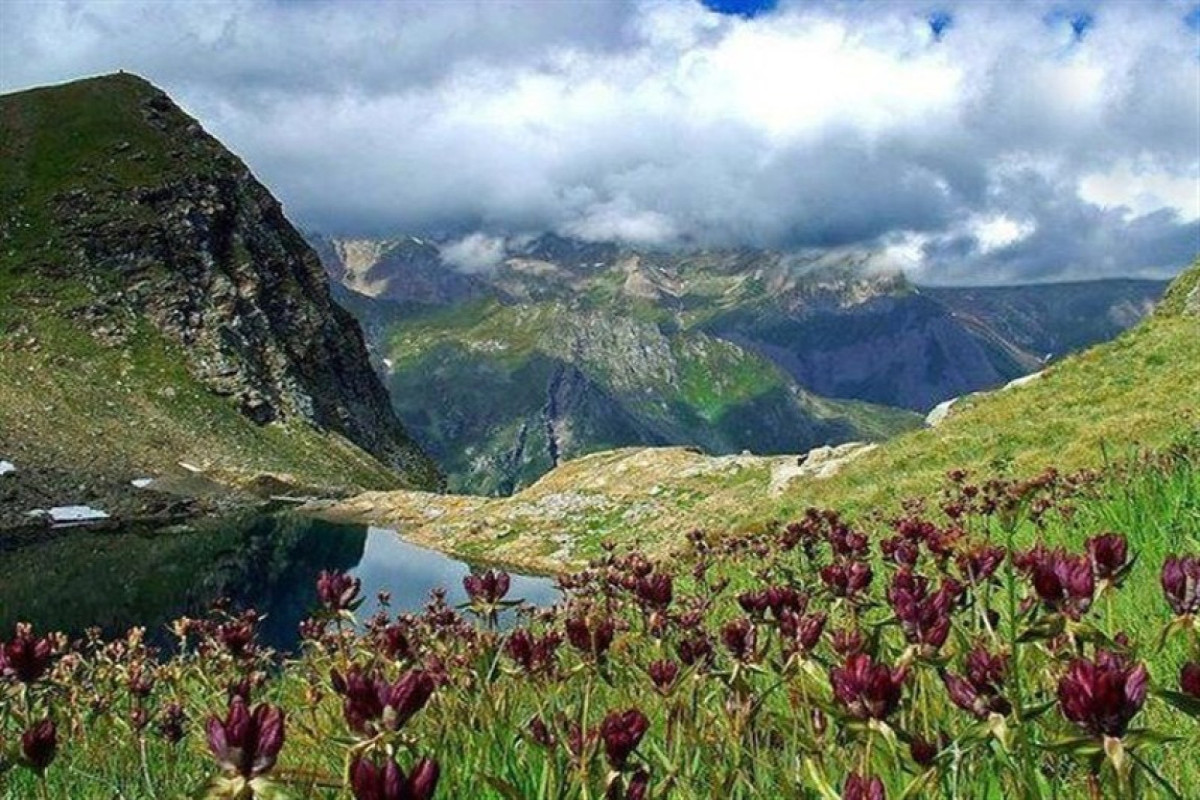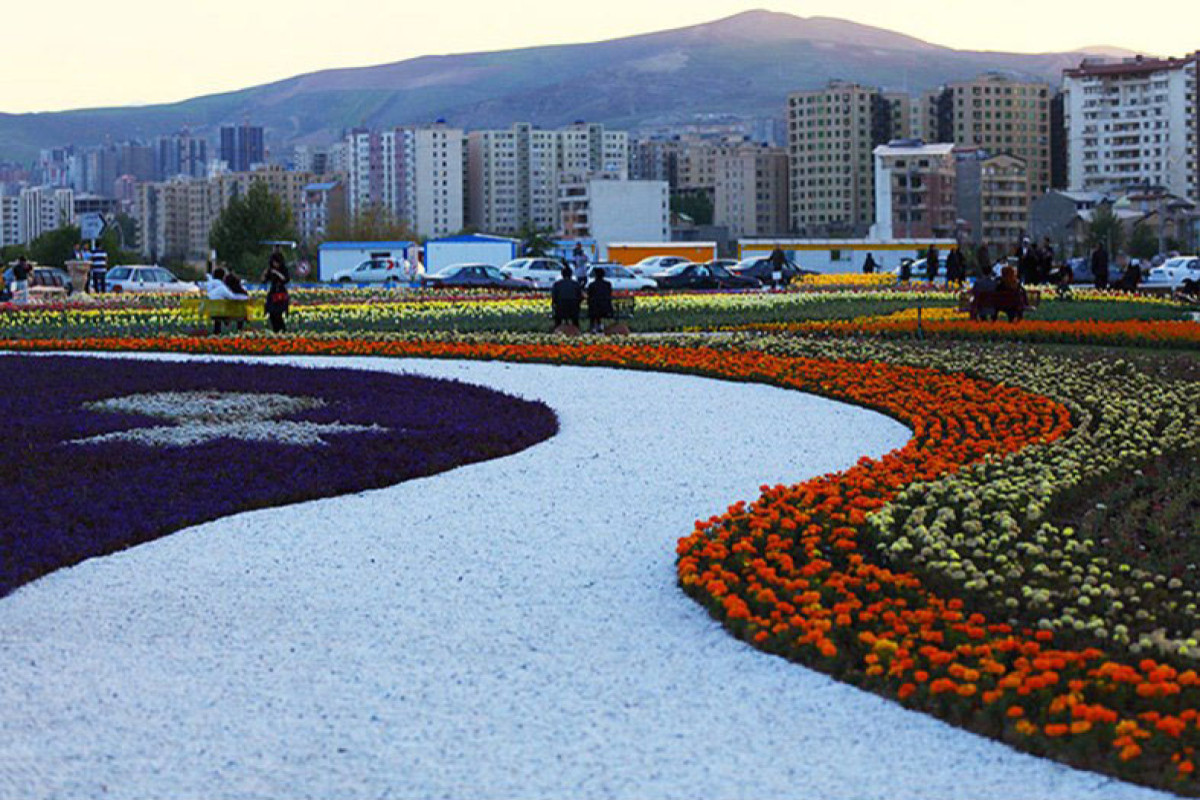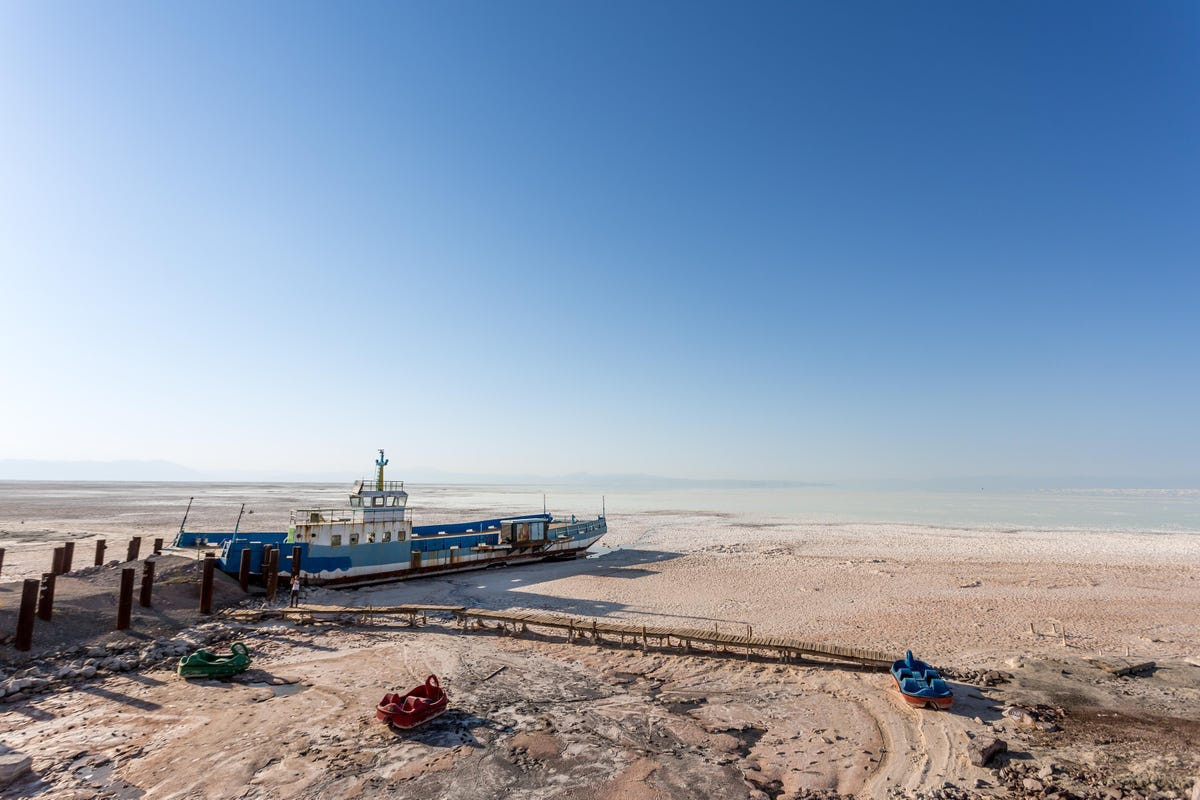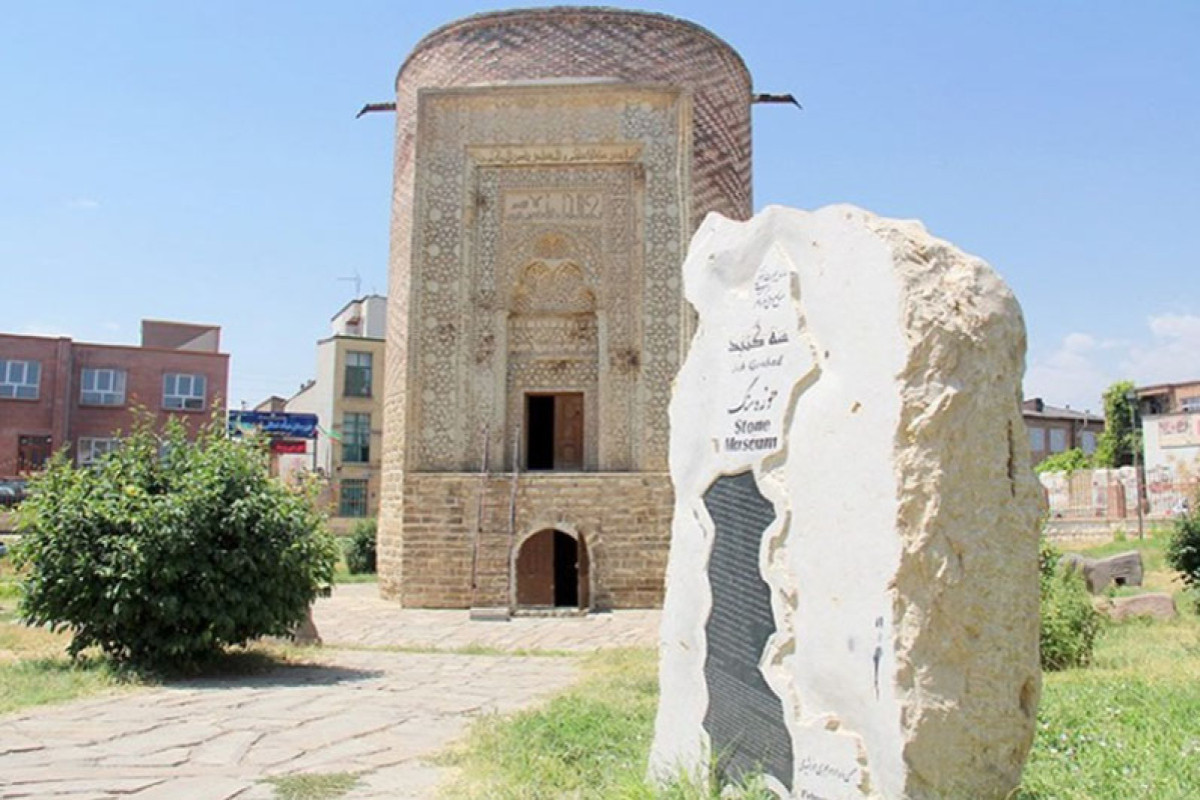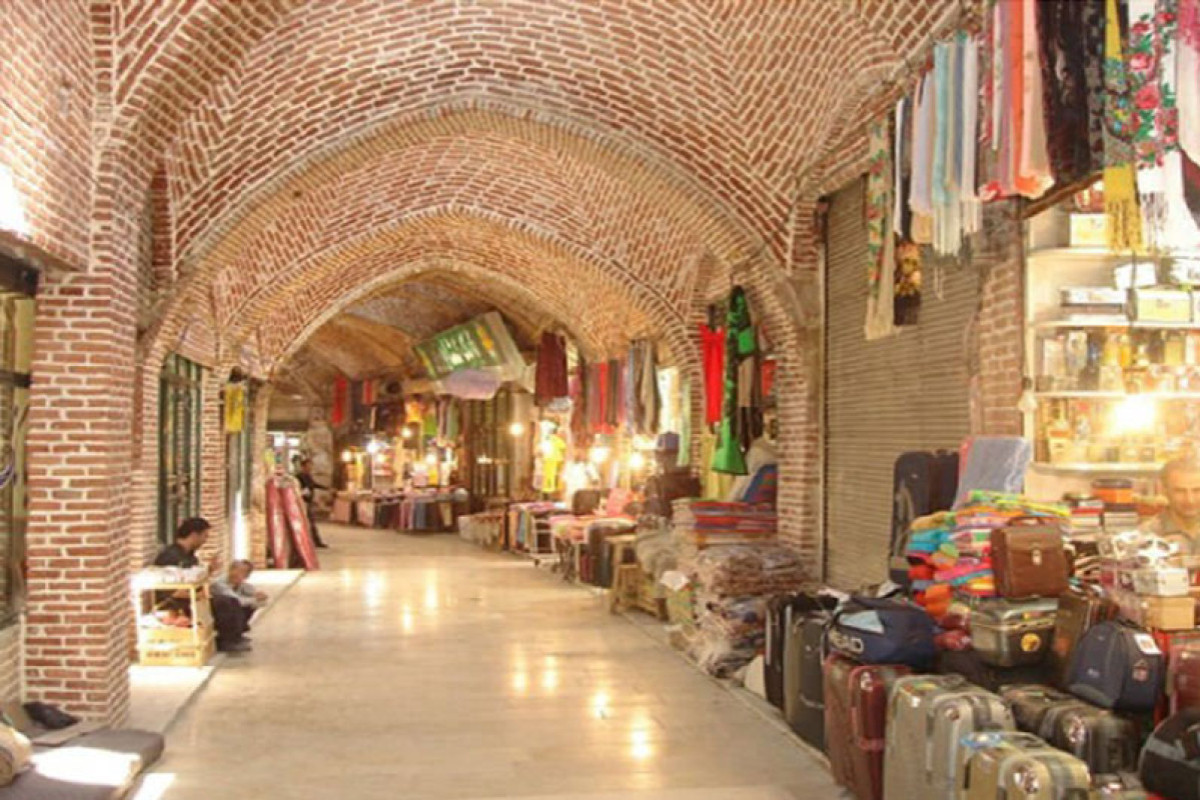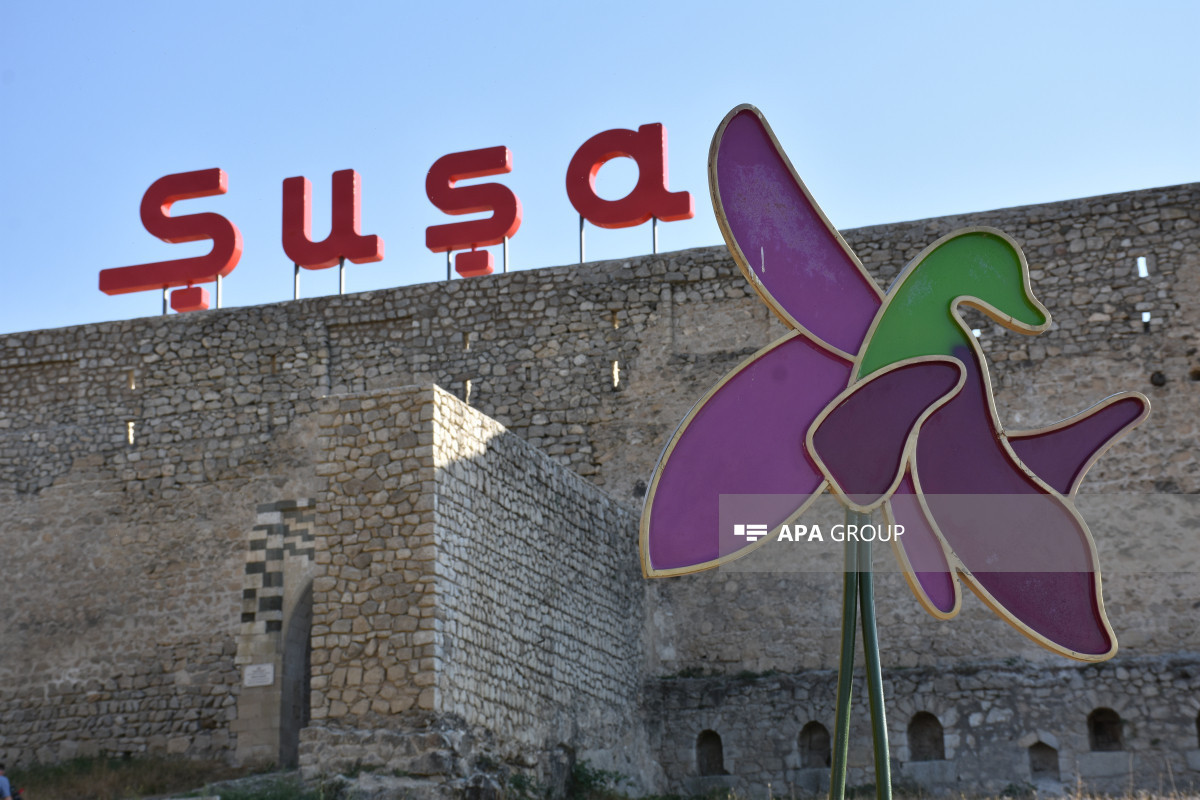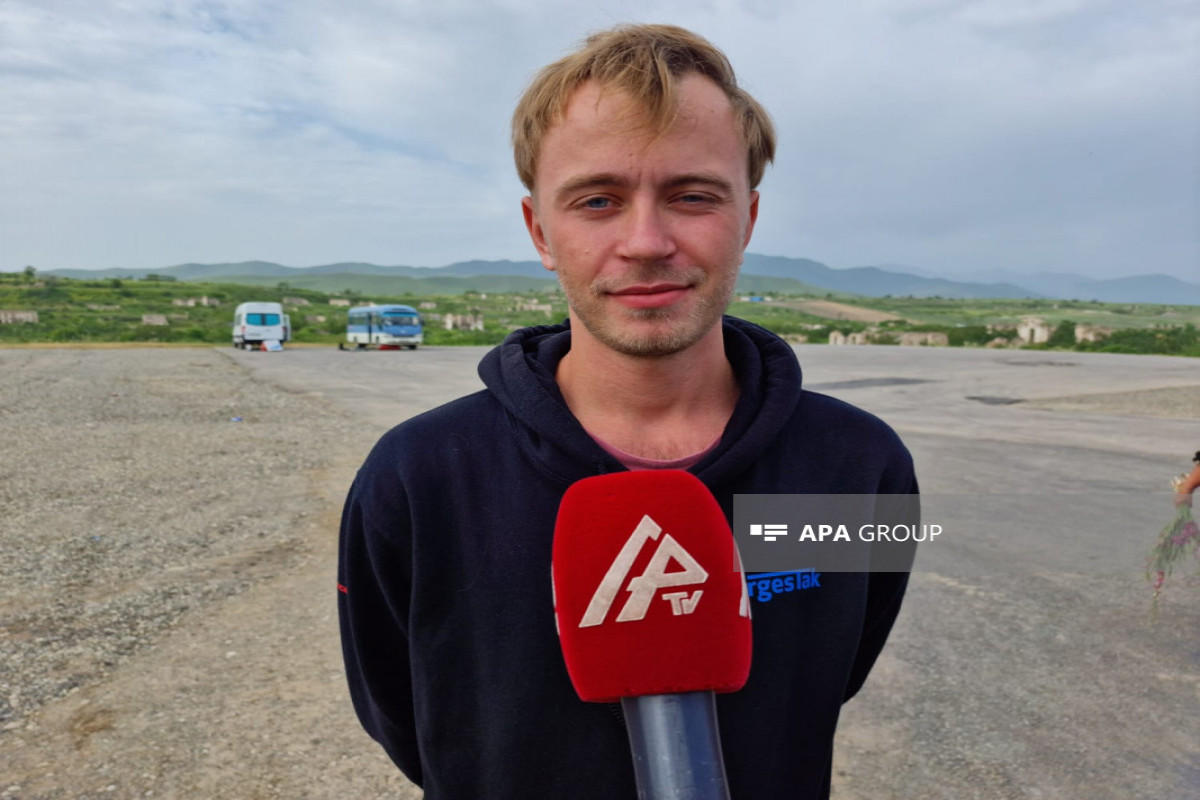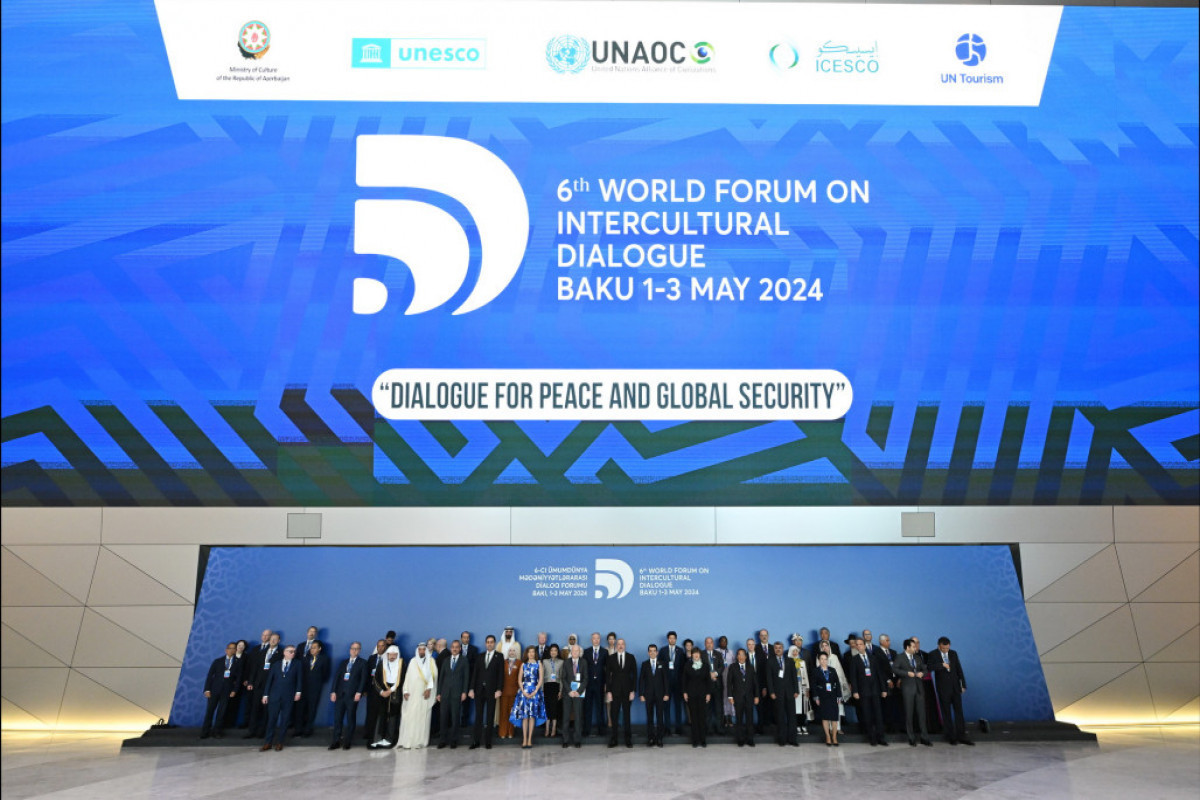APA continues its new project called "Know South Azerbaijan". The purpose of the project is to provide detailed information about the history, geography, culture, monuments, lifestyle and everyday life of the people of South Azerbaijan.
Within the framework of the APA project, this time Muhammad Rahmanifar's article about the next city - Urmiya (Urmu) is presented.
Read the first article
The beating heart of Azerbaijanism
Urmia city is considered the center of the West Azerbaijan province. The city is the largest and most densely populated settlement in the province. It should be noted that according to the country's administrative-territorial division in Iran, the South Azerbaijan region is divided into West Azerbaijan, East Azerbaijan, Ardabil, Zanjan, Alburz, Gazvin, and Hamadan provinces (ostans). The city of Urmia is actually located in the center of the Urmia region (sahristan) and is surrounded by the smaller cities of this region such as Gushchu, Sero, Nushinshahr, Silvana, and Gulman.
Urmia is located in the plain, next to the lake of the same name. This beautiful city is surrounded by kilometers of vineyards, apple orchards, and fields. Therefore, the city is famous for its green gardens, especially apple, and many vineyards. Grapes are the symbol of Urmia, and even a statue of grapes has been placed in one of the city's squares. Located at an altitude of 1,332 meters above sea level, Urmiya is located in the east of the city, and Lake Marmisho is located in the west.
According to the 2017 census, the population of Urmia city is 736,224 people, and the population of Urmia district is 1,040,565 people. The vast majority of the population of the city of Urmia has historically been Azerbaijani Turks and today they speak Azerbaijani Turkish. The majority of the population are Shia Muslims, but Sunni Muslims and Christians also live in small numbers. One section of Sunni Muslims, called Kura-sunny, is considered Azerbaijani Turks and speaks Azerbaijani Turkish, but another section speaks Kurdish. Christians are mostly composed of Assyrians and Armenians. However, almost the majority of the names of the old neighborhoods of Urmia, historical monuments, mountains, rivers, plains and villages around this city are in Azerbaijani Turkish.
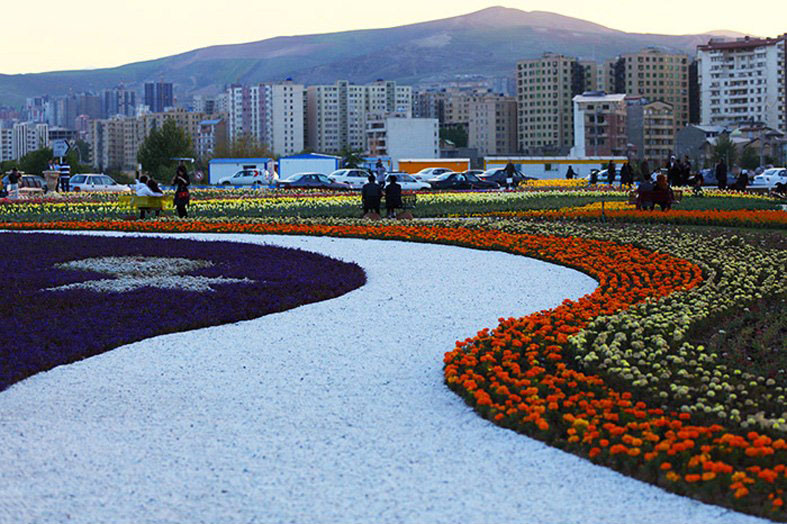
A brief look at the history of Urmia
Old objects obtained from many mounds around the city (Gök Tepe, Digale, Termani, Ahmed, Saralan, Dize Tepe) were examined and it was determined that Urmia was located in the ancient Urartu territory. It is worth noting that the discovery of a large number of Urartian inscriptions and artifacts in different regions of Azerbaijan indicates that Urartu occupied the area around Lake Urmia and even the areas around Sahand Mountain (Tabriz-Maraga). Of course, before and even after the establishment of the Urartu government, Urmia was constantly attacked by Assyrian warrior tribes.
From the ancient monuments in the region, it seems that Urmia was a prosperous and populated city during the Median period. From some antiquities and historical buildings of this area and its surroundings, for example, Hasanlu Castle, Goy Tepe, the sculpted face of the Sasanian Shah, the building of the Jami Mosque and some other works, it is clear that although this city has changed its location a little, from the distant past, Goy Tepe, Toprag Castle, Cichekli and also existed in its current location.
Even after Islam, Urmia preserved its historical importance and was considered one of the most prosperous and densely populated cities of Azerbaijan. In the first centuries of Islam, many Arab and Muslim travelers touched on this issue in their books. Among them, we can mention such 4th century geographers as Ibn Hovqal and Istakhri, who emphasized that Urmia is the third place among the cities of Azerbaijan (after Ardabil and Maragha), the abundance of water, the richness of fruits and productivity. Of course, it is natural that the period has not always been pleasant for the population of this city, like the population of other cities of Azerbaijan. Yagut Hamavi, who visited Urmia in 1220 AD, talks about the lack of security due to the weakness of its ruler. However, with the establishment of the rule of the Mongol Elkhans, Urmia, like many cities of Azerbaijan, is experiencing a period of peace, tranquility, prosperity and prosperity. This period of historical glory and greatness continues to a certain extent during the Aggoyunlu and Garagoyunlu periods, and there are valuable works related to these periods in the city of Urmia. However, during the Safavid era, Urmiya was not happy because it was located on the border between the Safavid and Ottoman empires.
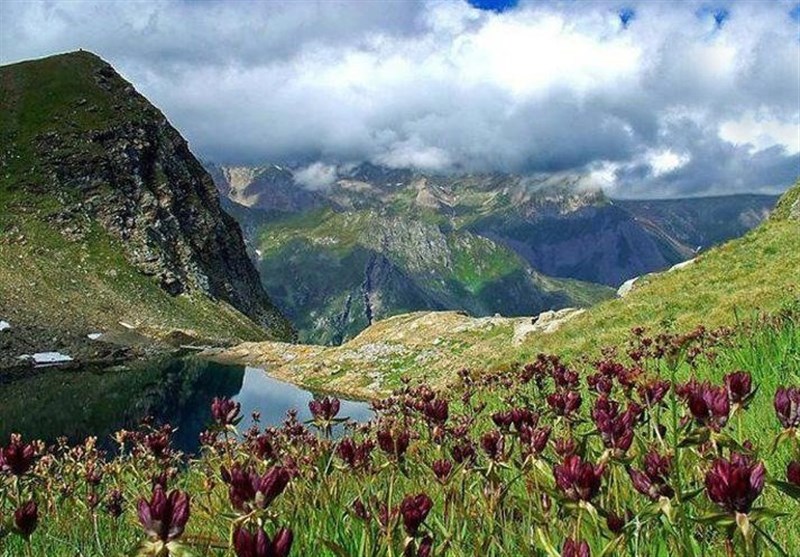
According to Tarikh-i Alam Aray-i Abbasi, Tergavar and Mergavar regions were given to the Kurds of Biradust in 1559 CE during the Safavid era of Shah Tahmasib because they were Shahsovans. In those years, due to the war between the Safavid and Ottoman empires, both empires gave concessions to the Kurds and tried to attract them. In 1603, Shah Abbas Kabir gave him the administration of Urmiya and Ushnaviyya because the emir of Biradust did not surrender to the Ottomans. Since that date, the Kurdish and Turkish problem continues in Urmia and some cities of Western Azerbaijan.
Although the population of Kurds living in Urmia today is less than 15% of the total population of this city, the supporters of terrorist groups such as the PKK, Pejak and the Kurdistan Democratic Party are trying to make it appear as a Kurdish city by making extensive propaganda about the Kurds of this city, and all the Kurdish television and media Urmia, even all the cities located in the western region of South Azerbaijan, are presented as Kurdistan, and unfortunately, the Persian television and press cooperate with them in this matter.
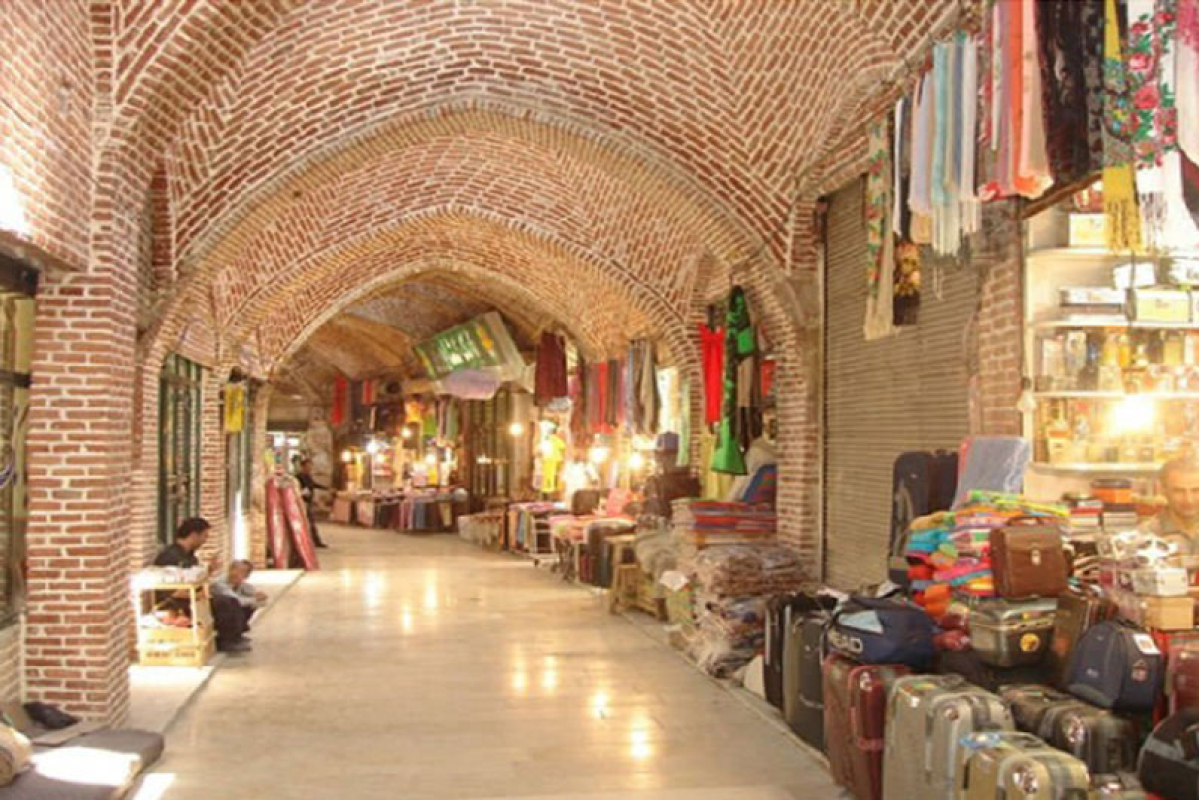
The truth is that Iranian nationalism has been based on extreme Persianism and hatred of Turks and Arabs since the Mashrutiya period. It is on this basis that the Persians consider themselves to be of the same origin as the Kurds and consider the Turks to be Turani and the historical enemy of Iran. In fact, this racist attitude is one of the reasons why the Persian-language media is widely associated with the false propaganda of the Kurdish terrorist groups about the western regions of South Azerbaijan. Of course, there is another reason for this. After the fall of the Turkish Qajar dynasty, the central government of Iran, which is based on the ideology of pan-fascism, has always tried to prevent relations between the Turks of South Azerbaijan and Turkey in various ways. One of these ways was the cutting of the land connection between the Turks of South Azerbaijan and Turkey, which the central government of Iran purposefully implemented in the last hundred years by placing the Kurds in this region. Especially after Northern Azerbaijan gained independence and the country's proximity to Turkey and fundamental steps towards the formation of the Turkic world were taken, the creation of the Kurdish corridor was pursued more intensively in order to cut off the land connection of the Turks in this region. These projects are carried out in such a situation that, at the same time, great efforts are being made to assimilate the people of Azerbaijan, especially the people of Urmia, and to Persianize them.
However, the Turkic people of Southern Azerbaijan managed to preserve their existence despite the bloody events throughout history. In October 1880, the city of Urmia was besieged by the Kurds who supported Sheikh Ubeidullah Shamzini, but the brave resistance of the people of this city destroyed the dreams of Sheikh Ubeidullah to create a state of Kurdistan in Azerbaijan. Another Kurdish warlord named Ismayil Simitgo (Semko) took advantage of the weakness of the central government of Iran to set up a government in the western regions of South Azerbaijan, and started killing and robbing cities like Selmas and Urmia, but he also failed to achieve his evil goal.
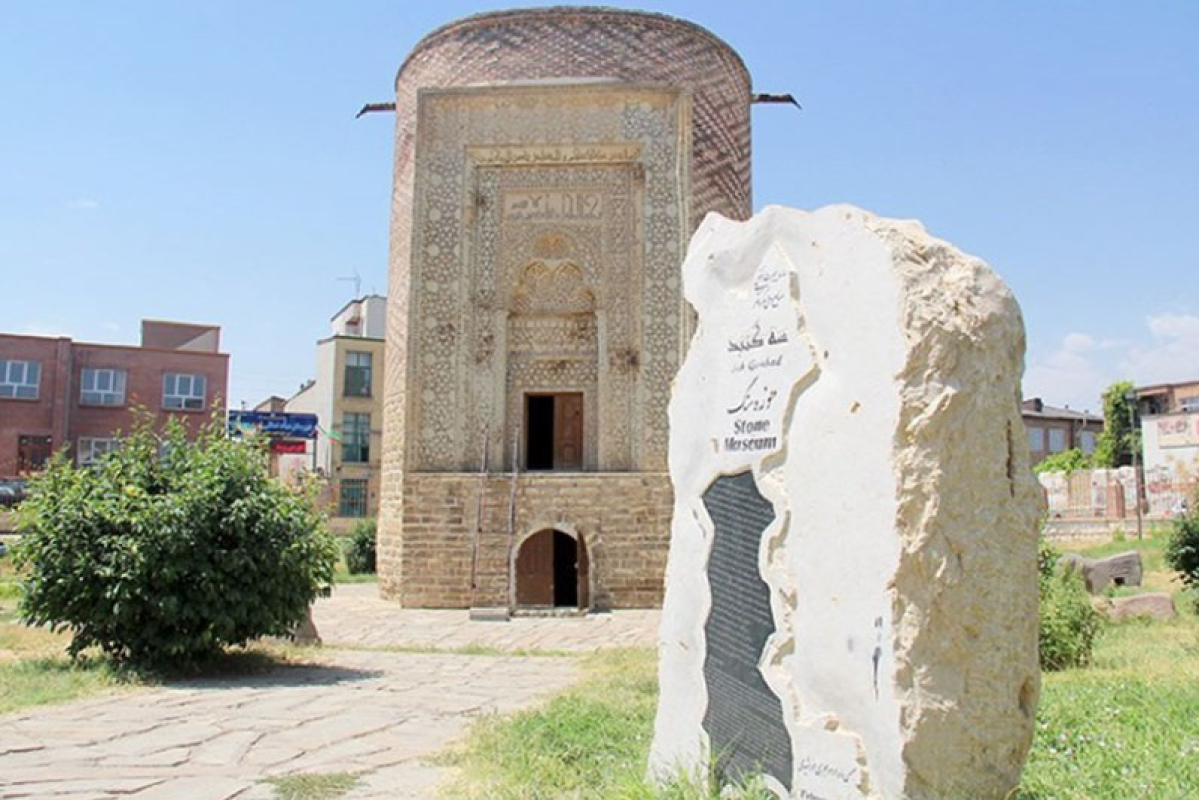
As you can see, Urmia is a city that the enemies of Azerbaijan always covet. But none of these bloody events could break the will of the city's population. After the fall of the Reza Shah Pahlavi dictatorship, which was constantly trying to destroy the history, language, culture, and traditions of Azerbaijanis, the people of Urmia, like the people of other cities of Azerbaijan, rose up and in 1945, the National Government of Azerbaijan was established under the leadership of Seyyed Jafar Peshawar. It is true that the National Government of Azerbaijan was brutally suppressed by the central government of Iran after a year, and after that the central government of Iran once again tried to destroy the culture of Azerbaijan. These efforts are still ongoing, but the people of this city are still determined to preserve their identity. Although the policy of the Iranian government in the last hundred years has succeeded in assimilating some of the Azerbaijani Turks, the Azerbaijani culture still lives in Urmia. Folklore examples, customs, fashions and traditions such as Azerbaijani dance and music, performances of Azerbaijani amateurs, performances of ashiqs, bayatis, Azerbaijani mugam, Tuesday fashions, Nowruz holiday fashions, counters, kosa, tekamchilars, chilla night, "Koroglu" saga live in this city. it means that Azerbaijan still lives in this city.
Today, the youth of Azerbaijan are determined to preserve their Azerbaijaniness, culture, history and language, despite all the obstacles and strictures of the government. The activities of the youth of Urmia are not limited to the preservation and development of the culture and language of Azerbaijan. In recent years, these young people have taken to the streets many times and protested against the deliberate drying of Lake Urmia by the Iranian government, and so far dozens of people have been arrested because of these protests. During the 44-day Karabakh war, the population of this city brought their objections to the Iranian government's support for the invading Armenians to the attention of the authorities in various ways, and expressed their happiness by distributing sweets on the day of Shusha's liberation.

Historical works
There are many monuments in Urmia that tell about the rich history of the city. The large indoor bazaar (Ustüertulu bazaar) of this city, built with baked bricks, is a relic of the Safavid period and, of course, has undergone changes in later periods.
The Urmiya Cami Mosque is located near the Urmiya Bazaar and dates back to the Mughal Elkhanate period. Some parts of this mosque are relics of the Seljuk Turks. The mihrab of the mosque is considered one of the most beautiful works of architectural art of the Mughal period. Ancient Dogguz Pilleh glacier, Uch Gumbaz historical monument, General Mosque and dozens of historical houses and buildings reflect the Azerbaijani identity of this city.
Ignoring its controversial pre-Islamic history, this city, ruled for nearly a thousand years by Turkic states, many of which were Azerbaijan-centric governments, has, as I mentioned, been the center of greed for the greedy throughout its long history, especially in modern times. But the people of this city still firmly and steadfastly protect their Azerbaijani spiritual heritage. It is for this reason that today the people of South Azerbaijan named this city "The beating heart of Azerbaijanism".


